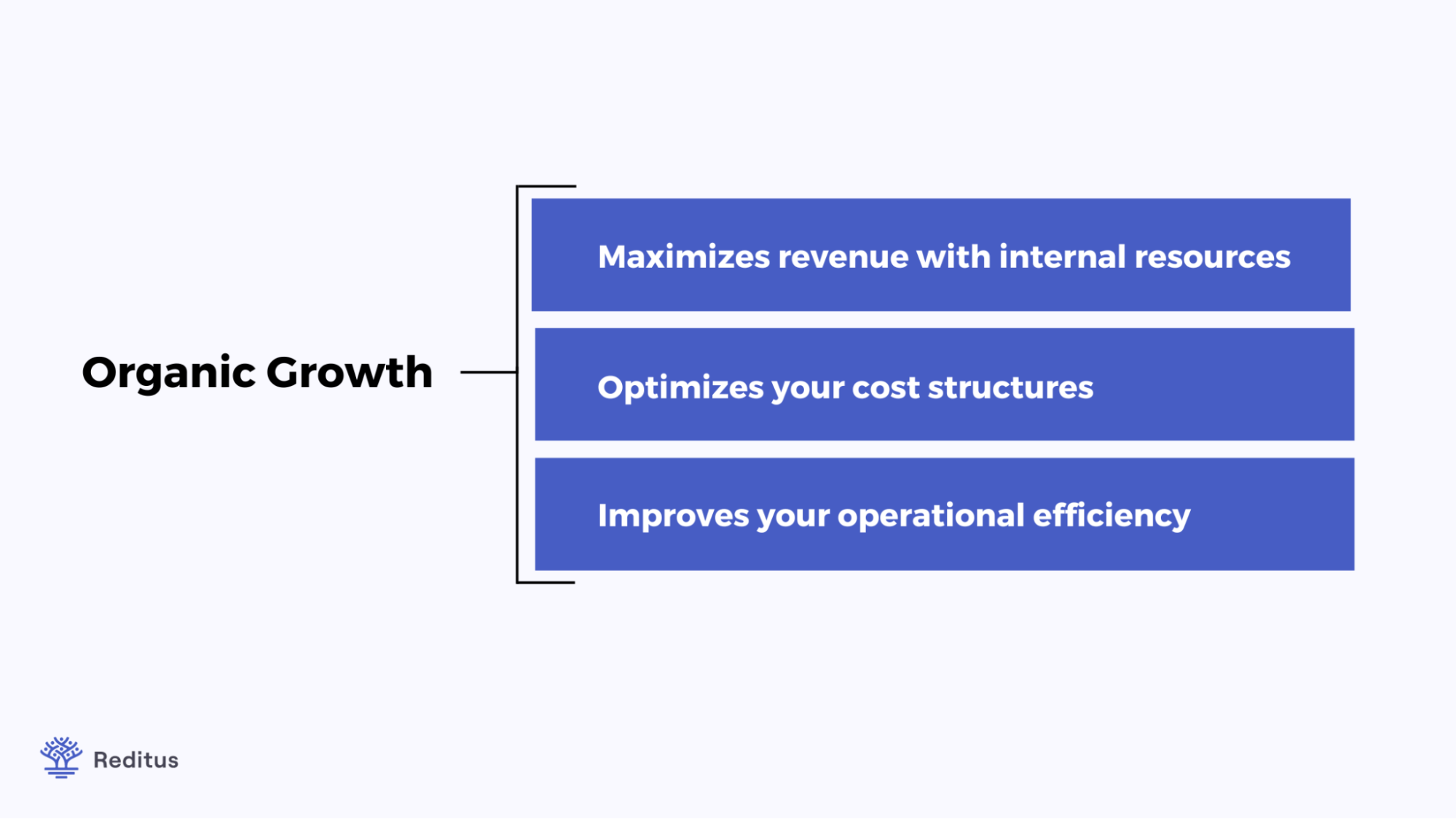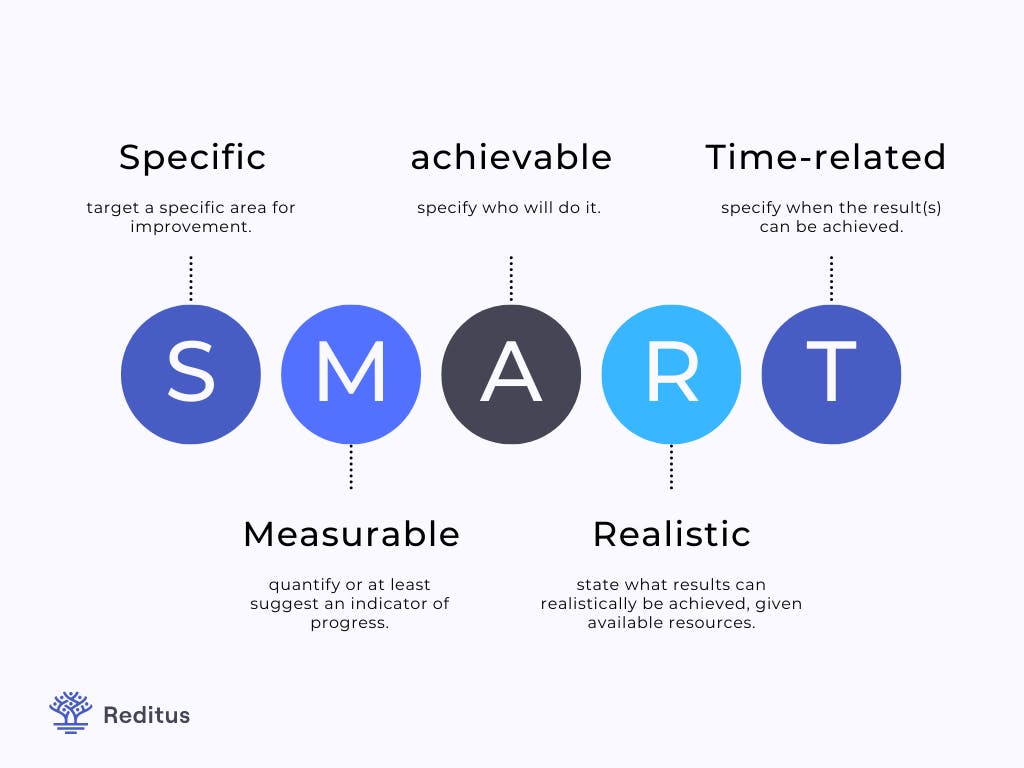What Is Organic Business Growth? Your Playbook for 2024

SaaS is all about growth, but it doesn't come easy. You have to work for it. And that's where organic business growth comes in.
Organic growth is about acquiring new customers and growing your business through existing channels without paid marketing.
It's the most sustainable way to grow a business and how most SaaS companies make their mark.
With the upcoming recession, organic growth will be more critical than ever. Paid channels and acquisition strategies will be less effective, and companies will have to rely on their existing media to grow.
So, how do you go about growing your SaaS company organically?
Today, we'll go over everything you need to know about organic business growth, from what it is to how you can make it work for your company.
Table of contents
What Is Organic Growth?
Organic growth is the process of acquiring new customers and growing your business without any paid marketing.
That means no ads, no paid search, no paid social media, and no promotional partnerships.
Organic growth is generated by the channels you already have in place, such as your website, blog, social media, and email list.

The main goal of organic growth is to create sustainable and long-term growth.
It's a gradual process that takes time, effort, and consistency.
Organic growth is often seen as the most sustainable and scaleable form of business growth.
What Are the Benefits of Adopting an Organic-First Strategy?
There are several benefits to adopting an organic growth strategy:
- It's more sustainable in the long term: Organic growth is a long-term strategy that focuses on building sustainable relationships with your customers. It's not a quick fix that will fizzle out after a few weeks or months.
- It's more cost-effective: Paid marketing can be expensive, and there's no guarantee that you'll see a return on your investment. On the other hand, organic growth helps you get the most out of all you've got - your existing channels, content, and customers.
- It generates higher-quality leads: Organic growth helps you attract customers who are already interested in what you do. Paid marketing, on the other hand, allows you to reach a wider audience, but that doesn't necessarily mean they're all interested in what you do.
- It builds trust and credibility: When you focus on organic growth, you're building trust and credibility with your customers from the ground up. They'll likely stay with you long-term and recommend you to others.
- It's evergreen: Organic growth is an evergreen strategy that you can continue to rely on yearly. Paid marketing is often seasonal and can be less effective over time.
What Are the Challenges of Organic Growth?
Of course, some challenges come with organic growth:
- It takes time: Organic growth is a long-term strategy, which means it can take months or even years to see results.
- It requires patience: Organic growth is gradual, so you need to be patient and consistent to see results.
- It can be challenging to scale: Organic growth can be difficult to scale because it relies on your existing channels and customers. To scale your business, you need to find new ways to reach new audiences and grow your customer base.
- You need a strong foundation: For organic growth to succeed, you need a strong foundation first. That means having a great product, a solid marketing strategy, and an engaged customer base.
- It's not always predictable: Organic growth can be unpredictable because it's based on word-of-mouth and other organic channels.
What Are the Elements of a Successful Organic Strategy?
If you want to see success with organic growth, there are a few key elements you need in place:
1. A great product
A great product is the first and most crucial element of any successful organic growth strategy.
If you don't have a product that people want, no amount of marketing will help you grow.
2. A solid marketing strategy.
The second element you need is a solid marketing strategy.
You need to know your target audience and how to reach them.
It would help if you also had a plan for creating and promoting content, building relationships, and generating leads.
3. Engaged customers
Another critical element of any successful organic growth strategy is engaged, customers.
Your customers need to be invested in your product and excited to tell others about it.
How Can You Create an Organic Growth Strategy?
Here are a few tips for creating an organic growth strategy:
Step 1. Define your goals
The first step is to define your goals.
What do you want to achieve with your organic growth strategy?
Are you looking to increase brand awareness, generate leads, or drive sales?
Instead of saying, "I want to grow my business," be specific about what you want to achieve.
For instance, you could say, "I want to increase website traffic by 20% in the next six months."

You might also set specific KPIs and target numbers for website traffic, leads, and customers.
Some other goals you might want to set include:
• Increasing social media following
• Creating more engaging content
• Generating more leads
• Driving more sales
Ultimately, your goal should be to grow your business sustainably.
Step 2. Do your research
The next step is to do your research.
Start by understanding your target audience and what they're looking for.
You should also research your competitors and understand what they're doing well—and what they're not doing well.
This will help you create a unique and effective organic growth strategy.
Research methodologies you can use include:
- Surveys: You can survey your target audience to learn more about their needs and wants.
- Social media listening: You can use social media listening tools to track what people say about your brand, competitors, and industry.
- Competitor analysis: You can use competitor analysis tools to track your competitors' organic traffic, keyword rankings, backlinks, and more.
3. Create compelling content
Compelling content is one of the essential elements of any organic growth strategy.
Content will help you attract new visitors, engage your audience, and generate leads.
To create compelling content, start by understanding your target audience wants to see.
You can use surveys, social media listening, and competitor analysis to learn more about your audience's needs.
For instance, if you're targeting new moms, you might want to create content about parenting tips, healthy recipes, and ways to save money.
If you're targeting small businesses, you might want to create content about marketing tips, budgeting advice, and time-saving hacks.
Once you know what kind of content your audience wants to see, you can start creating it.
Some types of content you might want to create include:
- Blog posts
- Videos
- Podcasts
- Ebooks
- Webinars
And any other type of pain-point content that will help your customers solve a particular problem.
Platform-native content is also essential.
This content is created specifically for a social media platform, such as Instagram Stories or Facebook Live videos.

Platform-native content is vital because it helps you reach your audience where they are.
Your content marketing mix should include platform-specific and generic content that you can repurpose across multiple channels.
4. Optimize your website for search engines
Another critical element of your organic growth strategy should be search engine optimization (SEO).
SEO is the process of optimizing your website for Google and other search engines.
When you optimize your website, you improve your chances of ranking in the search results.
And when you rank in the search results, you're more likely to get organic traffic.
To optimize your website, start by doing keyword research.
Keyword research is the process of finding the right keywords to target.
You can use keyword research tools like Google Keyword Planner and Ubersuggest to find keywords that are relevant to your business.
Keywords give you clues about search intent. That is, what the searcher is looking to do.
There are four main types of keywords:
- Navigational keywords: These are keywords that people use to find a specific website or brand. For instance, if someone is looking for the Nike website, they might type in "Nike" or "Nike website."
- Informational keywords: These are keywords that people use when they want to learn about something. For instance, someone looking for information about parenting might type in "parenting tips" or "how to be a good parent."
- Transactional keywords: These are keywords that people use when they're ready to make a purchase. For instance, if someone is looking for a new pair of shoes, they might type in "buy shoes" or "shoes for sale."
- Commercial keywords: These are keywords that people use when comparing shopping. For instance, if someone is looking for a new pair of shoes, they might type in "Nike vs. Adidas" or "Best running shoes."
Producing content around these keywords can help you attract your target audience and generate organic traffic.
In addition to keyword research, there are other SEO best practices you should follow, such as:
- Optimize your title tags and meta descriptions.
- Use keyword-rich headlines.
- Use images and videos.
- Optimize your website for mobile.
- Use social media to promote your content.
- Use external sources to build links to your website.
5. Promote your content
Once you've created your content, it's time to start promoting it.
There are many ways you can promote your content, including:
- Social media: Share your content on social media platforms like Twitter, Facebook, and LinkedIn.
- Email marketing: Send your email subscribers links to your latest blog posts or videos.
- Advertising: Use advertising platforms like Google Ads and Facebook Ads to promote your content.
- Influencer marketing: Build meaningful relationships with influencers in your industry and get them to promote your content to their followers.
- Guest blogging: Write guest blog posts for other websites in your industry.
Promoting your content can help you reach a wider audience and generate more organic traffic.
Ross Simmonds, the founder of Foundation Marketing, put it well:
"Create once. Distribute forever."
That simple statement epitomizes the content marketing strategy that leads to success on an organic level.
To grow your business organically, you must produce high-quality content and promote it effectively.
6. Analyze and improve
Once you implement your organic growth strategy, tracking your progress and analyzing your results is essential.
This will help you understand what's working and what's not so that you can make necessary adjustments.
There are some metrics you can track, including:
- Organic traffic: This is the number of visitors who visit your website from organic search.
- Keyword rankings: This is where your website ranks for specific keywords in search engines.
- Conversions: This is the number of people who take the desired action on your website, such as subscribing to your email list or making a purchase.
By tracking these metrics, you can identify areas for improvement and optimize your organic growth strategy accordingly.
Conclusion
Organic growth is essential for any business that wants to scale and succeed in the long term.
To grow your business organically, you need to produce high-quality content, optimize your website for search engines, and promote your content effectively.
By following these steps, you can reach a wider audience, generate more organic traffic, and achieve sustainable growth.

